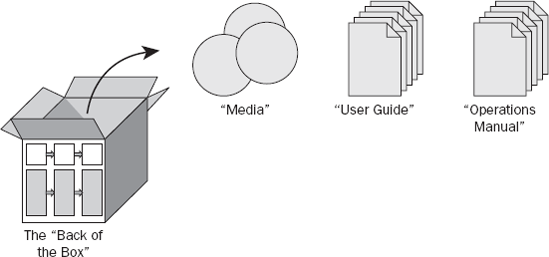4.1. Thinking Out-of-the-Box
In keeping with the style of this book, let's start at the end and work backwards. While the Internet and software downloads have become the norm, you can think of a software package as a virtual box. Figure 4-1 shows the basic contents of a software package, as described in the introduction to this chapter.
Figure 4.1. Figure 4-1

With these core contents in mind, it helps to shape the overall project, its scope, its benefits, and its ultimate delivery. It also promotes my personal vision of thinking about the recipient of the software and assuming that they've just obtained the software. You can apply the "out-of-the-box" thinking to any piece of software that you develop, including tools and productivity scripts. The documentation would need to be very thorough and provide all the information required. Using the contents of the box as an outline of the key deliverables can provide a good starting point for the application design and development roadmap. Almost everything that you produce would ultimately be included within these (and supporting) documents. Thinking about the contents of these documents early on can save you the time and effort of producing multiple sets of documentation for similar purposes. As the project progresses, the documentation becomes more and more defined. I'm not suggesting that all architects and developers become technical ...
Get Design – Build – Run: Applied Practices and Principles for Production-Ready Software Development now with the O’Reilly learning platform.
O’Reilly members experience books, live events, courses curated by job role, and more from O’Reilly and nearly 200 top publishers.

